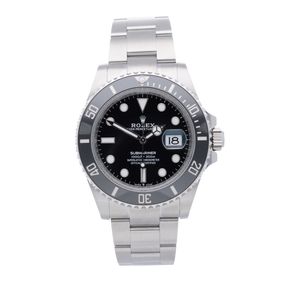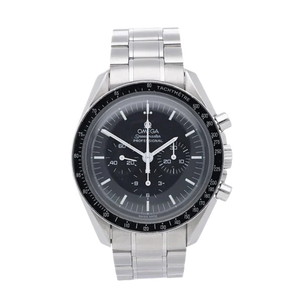Storing watches properly
Sooner or later, luxury watch fans must address the question of how to safely store their beloved treasures. The selection of fine wristwatches is simply enormous. Various manufacturers entice with technical gadgets, captivating designs, and impressive innovations that are hard to resist. As a result, watch collections often grow larger and larger. But ultimately, you can only wear one at a time, and so the need for storage arises. Below, we'll tell you how to properly store your favorite models and, above all, what you should consider for a suitable, long-term "break" for your timepieces so that they continue to bring you joy for a long time to come.
Off on holiday
Many watch lovers can't quite decide among the wide range of beautiful, sophisticated luxury timepieces available – but they don't have to. After all, you can simply choose the perfect companion each day and carefully store the rest. However, there are a few things to keep in mind for proper storage so that your beloved pieces, which are currently "on vacation," don't lose their beauty or functionality.
Preparation is everything
To successfully store a watch collection, the pieces must be properly prepared. Wearing a wristwatch can cause sweat, sebum, soap, or cream residue to build up on or under the watch. This can lead to discoloration and corrosion. This affects not only stainless steel and other metallic materials but also leather and synthetic straps. Stubborn, long-term soiling can even lead to pitting. Worn watches should therefore be cared for regularly. A damp microfiber cloth is sufficient; carefully wipe the top and bottom of the watch, paying particular attention to corners and recesses. Dishwashing liquid can also be used, but aggressive cleaners should be avoided. Steel straps can be cleaned with a toothbrush, as deposits often build up in the fine spaces between the individual links. Then dry the watch thoroughly with a clean kitchen towel.
What about the battery?
But standard watch care doesn't end there; the inside also requires attention. The battery in automatic watches should only be removed if it is already clear that the watch will be stored for a long time. However, the condition of the battery is also important. If a watch is not worn for a long time, the battery often loses functionality and can leak. This can cause massive damage to the watch. Sometimes the movement is even completely destroyed. For this reason, the battery should be removed if the watch is only being stored for a long time. However, if it is only being stored for a short time, this is unnecessarily time-consuming. With quartz watches, the battery should be put into standby mode by pulling out the crown before storage. If you notice any limitations in the functionality of your watch after it has been stored for an extended period, it is best to change the battery immediately.
Is a watch winder necessary?
Many people first think of watch winders when they think about storing timepieces for longer periods. But is purchasing one absolutely necessary for correct storage? The rotor in automatic watches is kept spinning by the movement when worn. A watch winder simulates this movement, ensuring the timepiece is always wound and ready for immediate use. This is particularly advantageous for watches with complications, as constantly re-adjusting complex functions can be tricky, time-consuming, and nerve-wracking. Furthermore, a watch winder can also be used to determine the rate deviation. However, collectors in particular could hardly afford to purchase a high-quality watch winder for each of their valuable pieces. Aside from the financial disadvantages, there is often also concern about signs of wear and tear – after all, the watch is "worn" on the watch winder practically 24/7. For these reasons, most watch fans only use a watch winder for a few favorite pieces that need to be ready for use at all times, and let the rest run out and simply store them safely until the next time they are worn.
The right place
After preparation, it's time to choose the right storage location. It shouldn't be too bright or warm. UV radiation can even cause the dial to fade and thus ruin the watch. Furthermore, heat can loosen adhesive applications, which can then become caught in the hands. Such incidents reduce the lifespan of the watch, cause fading or yellowing, and can require extremely complicated repairs. Direct sunlight, other heat sources, and large temperature fluctuations are therefore no-gos for watch storage. Furthermore, the temporary home of your luxury watches should not be too humid. High humidity is particularly unacceptable for leather straps, as they can grow mold or develop unpleasant odors. So, find a dry place away from light with a low room temperature to enjoy your treasures for a long time.
The right “packaging”
However, the watch should not simply be placed unprotected in a drawer or on a shelf. A box is ideal. It doesn't have to be the original box, but if you still have one, there's nothing wrong with using it for storage. If you want to store several watches, a case with a lined interior and small cushions or something similar is recommended for a collection. You can wind the watches on these. With mechanical watches, this should be done every three months to keep the oils supple. Otherwise, these can stick or resinify inside the timepiece, severely impairing its functionality. It also prevents the timepieces from being scratched when the case is moved. Such a box is ideal for storing all your treasures beautifully arranged, dust-proof, and dry. A wooden case is preferable, as these are more robust and durable than those made of imitation leather. A display case is a good alternative for larger collections. Even though you now know all the important points to consider when storing watches, you should still check on your treasures from time to time. This is the only way to be sure that everything is in good condition and to know that your favorite pieces will accompany you for a lifetime and that you can perhaps pass them on as meaningful heirlooms.
This post is also available in: English












